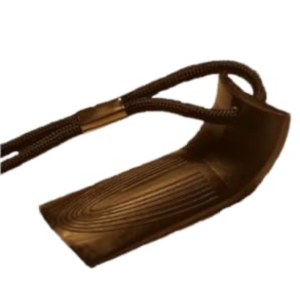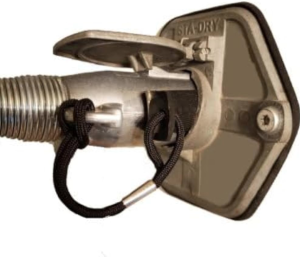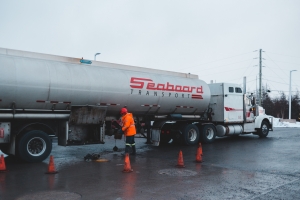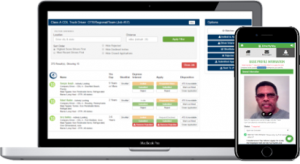
Starting in 2017, the Federal Motor Carrier Safety Administration (FMCSA) began to roll out a new mandate that affects almost all commercial vehicle drivers across the country.
This mandate requires most CDL holders to use Electronic Logging Devices (ELDs) to track their Hours of Service (HOS). Designed to replace traditional paper logs, ELDs automatically record driving time and other essential data, ensuring compliance with federal regulations and safety standards.
As the trucking industry continues to adapt to this significant change, it’s crucial for every driver to understand how ELDs work and how they help drivers to maintain safety and efficiency on the road.
What is an ELD?
ELDs are a digital solution that records a driver’s Hours of Service (HOS) automatically by synchronizing with a vehicle’s engine.
ELDs log data such as engine hours, vehicle movement, miles driven, location, and driver identification. ELDs can also capture safety information, such as harsh braking and collisions. This data is used to ensure that drivers are complying with the FMCSA’s required Hours of Service, protecting drivers from being overworked and from fatigue-related accidents on the road.
There are multiple components to an ELD, including the physical device, connected with the vehicle’s engine control module, and a mobile device or display unit used to view data. Many ELDs also offer a Cloud-based platform for storing and retrieving data.
Which Drivers Must Comply with the Mandate?
Although the FMCSA’s ELD mandate first went into effect in 2017, full compliance was not required until December of 2019. Now, most CDL drivers who are required to prepare HOS records of duty status (RODS) must comply with the mandate.
Potential penalties for non-compliance include fines, being placed out of service, or a negative impact on your carrier’s safety rating.
However, there are some drivers who remain exempt from the mandate. These include:
- Drivers of vehicles manufactured before the year 2000.
- Short-haul drivers who use timecards and meet specific criteria.
- Drivers operating within a 150-air-mile radius.
Benefits of ELDs for Drivers
ELDs are not just for the sake of the FMCSA, they also make daily record-keeping faster and more efficient for drivers and carriers.
By eliminating the need for manual logs, drivers can save valuable time and reduce the risk of errors that could lead to costly violation fines. ELDs automatically capture accurate data, ensuring compliance with HOS regulations and minimizing the chances of mistakes that could occur with paper logs.
With ELDs, drivers no longer must spend time filling out logbooks by hand, allowing them to focus more on driving and less on administrative tasks. This reduction in paperwork also streamlines communication with carriers, making it easier to submit records and reports.
Moreover, the use of ELDs contributes to increased safety on the road. By promoting adherence to HOS regulations, ELDs help prevent driver fatigue—a major factor in many accidents every year.
Tips for ELD Usage
Like with any new technology, it’s important for drivers to learn the best practices and tips to make the most of their ELD.
Drivers should familiarize themselves with their specific ELD device, including how to navigate its features, edit logs, and generate reports during inspections. Make sure to keep up with updates from the ELD provider to ensure you are using the latest software, which could include new features or compliance updates.
Because ELDs are digital and sometimes connected to the Cloud, technical issues are a possibility. For drivers that could experience poor connectivity in remote or rural areas, remember to store data locally until the connection is re-established.
If the ELD malfunctions or fails, it’s helpful to bring along backup paper logs until the device is up and running again. Drivers should also be aware of the FMCSA requirements for reporting and repairing ELD malfunctions, which requires drivers to report the malfunction to their carrier within 24 hours. The carrier will then have eight days to repair, service, or replace the ELD.
For more information on the future of trucking and to find out about exciting developments in the industry, be sure to check out more posts on our Truck Driver Blog and follow us on social media!









 2. Weigh My Truck
2. Weigh My Truck 2. Sanvello or Headspace
2. Sanvello or Headspace






